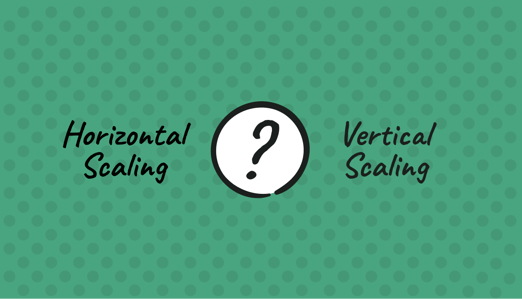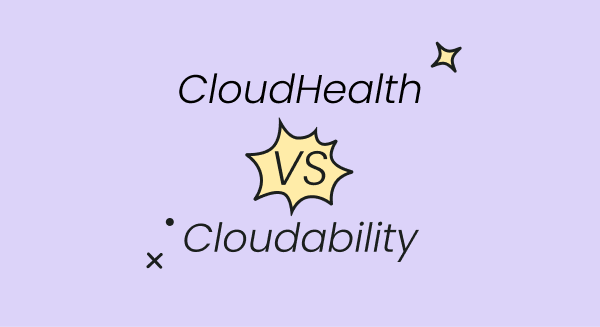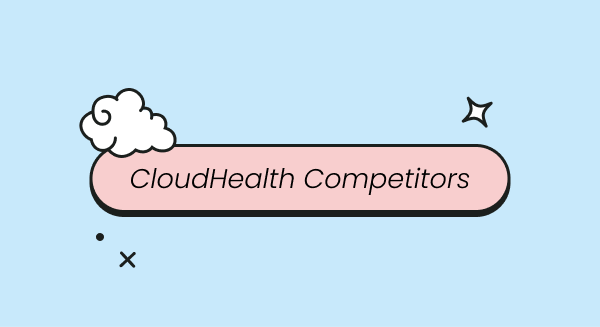
When it comes to the world of cloud computing, scalability plays an important role in determining how efficiently a system can deal with heavy workloads. When we refer to scalability, we are mainly referring to two main methods: cloud horizontal and cloud vertical scaling- both fundamental in improving system performance, but offer different solutions and are suited to different types of challenges.
In this blog post, we will break down the difference between horizontal and vertical scaling, learn about each method's pros, and cons, and how they affect costs and performance when using cloud services.
What is Vertical vs Horizontal Scaling?
Let's start off by understanding what exactly is vertical and horizontal scaling:
Horizontal Scaling: Think of it as expanding sideways. This method involves adding more machines or nodes to your system to allocate the load. In cloud computing, this method refers to the increase in the number of instances.
Vertical Scaling: Think of it as growing upwards. Vertical scaling refers to increasing the power of your existing machines or nodes. In a cloud setting, vertical scaling is reflected by upgrading your current instance to have more CPU, RAM, or other computational resources.
Vertical Scaling vs Horizontal Scaling: Pros and Cons
Vertical Scaling
Pros:
- Simple Management: Vertical scaling often means dealing with just one server, which makes management straightforward, minimizing complexities.
- Server Performance Improvement: By simply adding more resources such as RAM or CPU, there's an immediate improvement in server performance.
- Bypassing Load Balancing: With only a single server, there's no need for distributing incoming traffic, therefore, removing the need for load balancers.
Cons:
- Potential Downtime: Upgrading a server’s resources might result in temporary system shutdowns, which in turn, affect availability.
- Scaling Limits: Every server has its limit. There's only so much you can upgrade a machine before maxing out its potential.
- Risk of Service Interruptions: If the primary server encounters an issue, it poses a risk to the entire system, leading to potential service interruptions.
Horizontal Scaling
Pros:
- Dynamic Scalability: Horizontal scaling offers the flexibility to add or remove servers in tandem with the fluctuating demand, making it apt for unpredictable workloads.
- Enhanced System Resilience: Multiple servers mean even if one falters, others can pick up the slack, ensuring uninterrupted service.
- Distributed Traffic: With an array of servers at disposal, incoming traffic gets evenly spread out, minimizing the chances of any single server being overwhelmed.
Cons:
- Complex Infrastructure Management: The freedom to add servers comes with its own set of challenges—overseeing and integrating multiple servers can be a complex task.
- Database Scalability Concerns: While adding servers might sound easy, databases present their own set of challenges when scaling horizontally. Ensuring data consistency and effective partitioning becomes crucial.
- Additional Setup Requirements: Introducing more servers might mean the need for auxiliary tools, including load balancers, to maintain uniform service distribution and performance.
Horizontal Scaling vs Vertical Scaling in Cloud: Performance and Scalability
Horizontal Scaling: Offers better long-term scalability. As demands grow, you can continually add more instances. Especially for large-scale applications that witness unpredictable traffic, this provides a much-needed buffer against sudden surges.
Vertical Scaling: Provides an immediate boost in performance. By allocating more resources, applications can run more efficiently. However, it's limited by the maximum capabilities of a particular machine or instance type.
Scaling Horizontally vs Vertically: Cost Considerations
Cost is a significant factor in determining your scaling strategy:
Horizontal Scaling might seem cost-efficient, especially with pay-as-you-go cloud models. However, additional costs like load balancers, networking, and management tools can add up.
Vertical Scaling can become expensive quickly in a cloud setting. Larger instances generally come with exponentially higher prices. Moreover, the potential downtime during upgrades can lead to business losses.
How Finout Can Help You With Cloud Scalability?
Finout, the ultimate cloud cost management and optimization platform, empowers organizations to efficiently scale their cloud operations by offering comprehensive visibility into spending patterns, providing optimization recommendations to right-size resources, and ensuring cost-effective growth. Using Finout, companies can facilitate accurate budget forecasting, create customized reporting tailored to various departments, and integrate seamlessly with all cloud providers and services. By automating processes and ensuring governance and compliance as companies grow, platforms like Finout are pivotal in ensuring that scalability in the cloud is both strategic and economical.
Conclusion
Both horizontal and vertical scaling offer unique advantages and cater to specific needs in the cloud computing landscape. Your choice between them should be informed by your application's nature, traffic predictability, budget, and future growth prospects. Often, the most effective strategy combines elements of both, allowing businesses to harness the benefits of each approach while mitigating their respective downsides.








